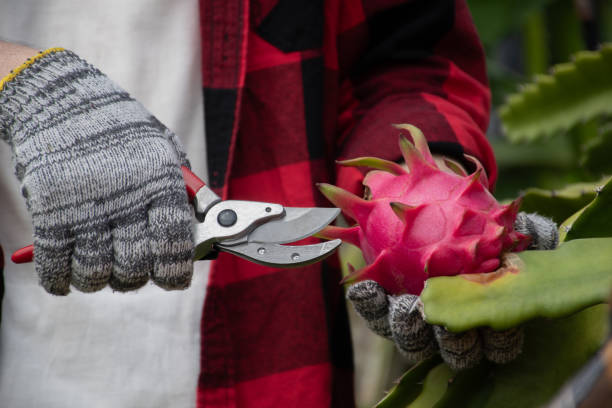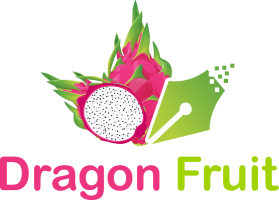When you buy fruit from a supermarket, you usually have to peel a small sticker before washing it to consume. Have you ever noticed that some digits are printed on those stickers? These digits are not meaningless. They are actually “PLU CODES” Or we can say; Price Look up codes. Next time, must notice these PLU Codes, before peeling those tiny stickers out of your fruits.
Well, it is off-the-topic, but from the health point of view, I can not resist reminding you that, First PELL those stickers, then WASH your fruit! No wonder, the skin under those stickers also contains dust particles and germs that need to be cleaned or washed out with water.
Coming to PLU Codes, these are specific for specific fruits, and our DRAGON FRUIT is also specified with a Dragon Fruit PLU Code.
I think before knowing Dragon Fruit PLU Code, it is important to understand what the PLU Code or PLU Number is and how we can interpret them!
Understanding PLU Numbers
PLU codes, also known as “Price Look-Up codes, are numerical identifiers. They are used for used for bulk produce goods which are sold in grocery stores and supermarkets.
These codes serve several essential purposes:
Unique Identification: Each PLU code uniquely corresponds to a specific type of fruit or vegetable. This is easy to keep records using PLU Codes and manage inventories. Using PLU Numbers eliminates the need for visual identification during checkout and inventory management of packed goods.
Pricing Accuracy: PLU codes help ensure accurate pricing. It helps a lot when different varieties (such as organic vs. conventional) have varying prices. What if someone so naive, can not differentiate between organic and conventional fruit? PLU Number can cut the hassle here!
Inventory Control: Supermarkets use PLU codes to track inventory, manage stock levels, and streamline operations.
How PLU Codes Work; How to interpret PLU Number?
Conventional Produce: Regular fruits and vegetables are assigned four-digit PLU codes in the 3000 and 4000 series. Dragon Fruit PLU Number also comes in the same category; like obviously!!
Organic Produce: To designate organic items, a “9” is prefixed to the conventional PLU code. For example, if the conventional code is 4011 (which represents regular bananas), the organic version would be 94011.
GMO Produce: Although rarely used, PLU codes in the 83000–83999 range were initially reserved for genetically modified (GMO) produce. However, these codes are now open for general use.

Fun Fact: Character Stickers of PLU Codes
Some producers have creatively used PLU stickers for promotions. They have their brand name printed on the same sticker mentioning PLU Code.
You might find collectible Disney character PLU Codes stickers on fruits or other media franchise tie-ins, adding a touch of fun to your produce shopping experience!
Dragon Fruit PLU Codes
Now, let’s focus on the exotic and vibrant “Pithaya”, “Pitaya”, or “dragon fruit”. As we know these tropical fruits come in various colors (white, pink, or red) and have a sweet, refreshing taste. When you encounter dragon fruit at the store, look for the following Dragon Fruit PLU codes:
Conventional Dragon Fruit: The PLU code for regular dragon fruit falls within the 4000 series. Specifically, the Dragon Fruit PLU Code is 3319 and 3040.
Who assigns the Dragon Fruit PLU Code?
Yes, it is a question. The International Federation of Produce Standards (IFPS) is responsible for assigning unique PLU codes to produced items. It is their rule that every individual piece of produced goods should have a sticker mentioning its PLU Code on it. So every single Dragon fruit we buy has a sticker with Dragon Fruit PLU Code 3319 or 3040 on it.
Remember, the next time you pick up a dragon fruit, you’ll know exactly which code to look for at the checkout counter!
FAQs
What is UPC and PLU?
UPC (Universal Product Code) is a barcode system. These codes are used to identify packaged goods. While PLU (Price Look-Up) codes are numerical identifiers for fresh produce items in retail settings.
What is PLU number 4?
When you see a four-digit PLU code on a produced good, and that PLU code starts from 3 or 4 it means, that product is not organic but conventionally grown.
What is PLU Code 3040?
PLU Code 3040 is specified by IFPS for White-fleshed Dragon Fruit or White-fleshed Pithaya.





